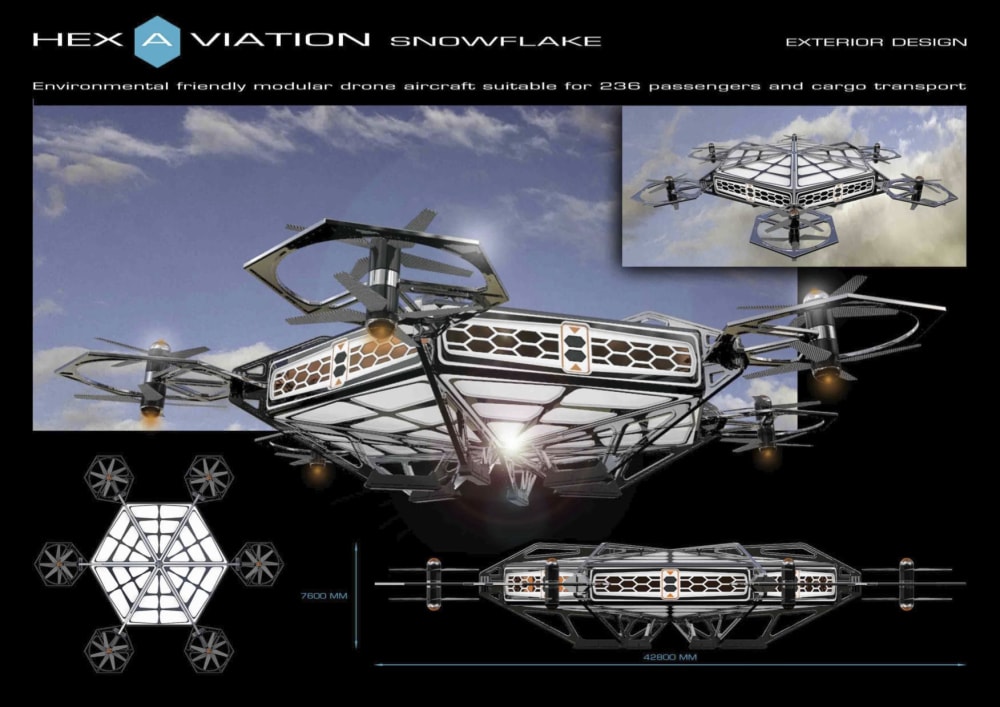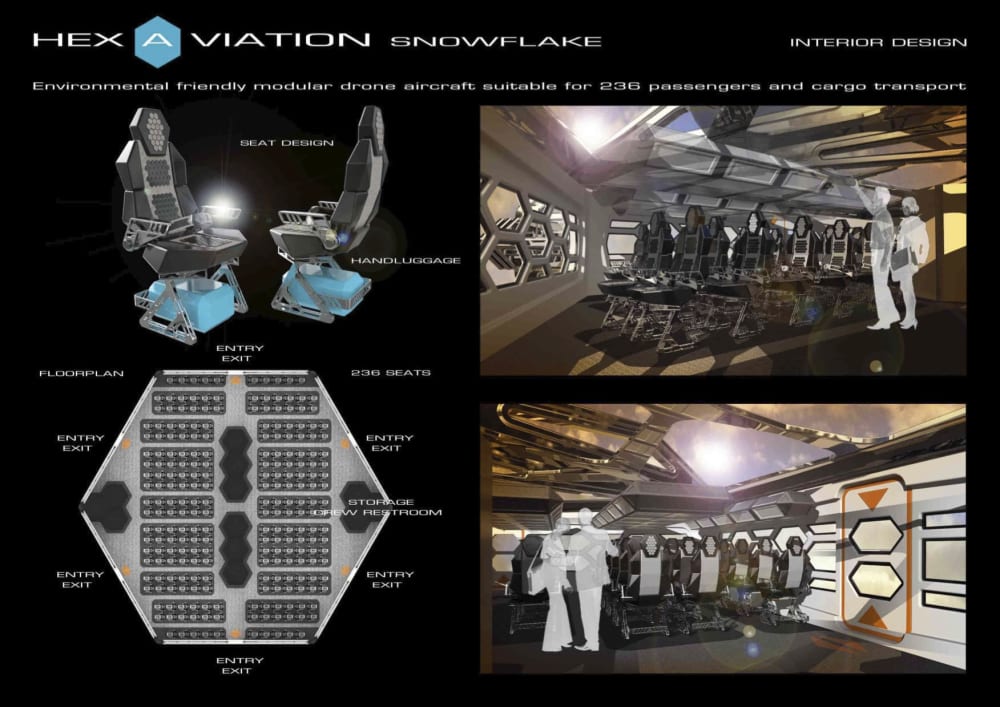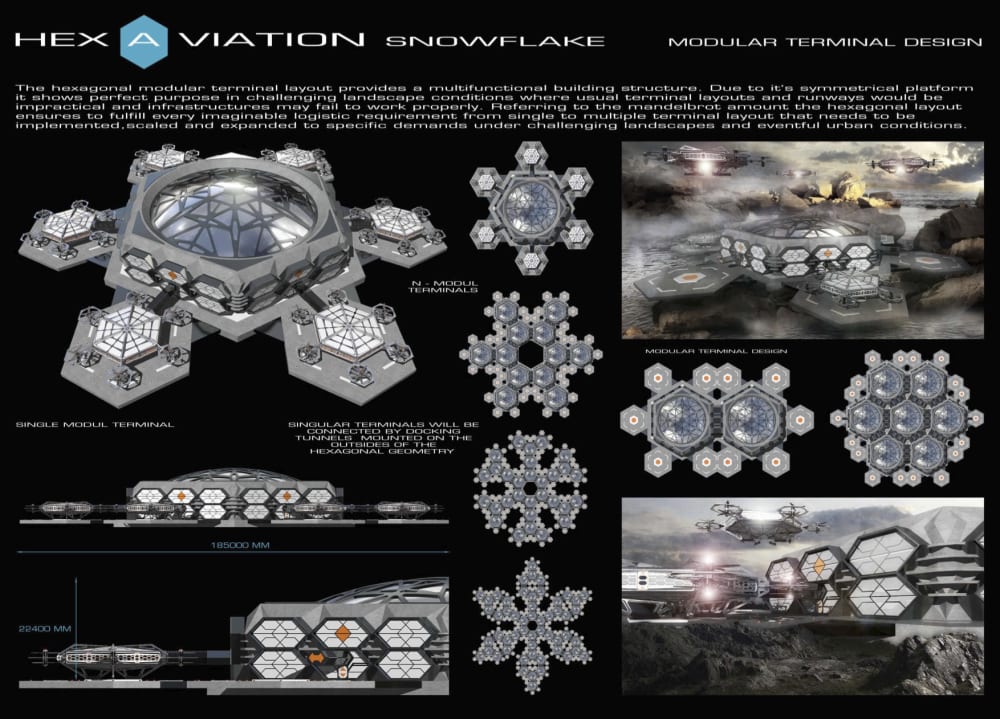The Hexaviation Snowflake is a groundbreaking innovative design concept for an environmental friendly autonomous flying advanced passenger transportation system. The technology is based on a drone flyer using a double propeller vertical take-off and landing principle which is powered by hydrogen fuel cell units. The vehicle expands the use of a mere aerotaxi and leads into spheres of professional aviation systems that operates beyond urban mobility. Due to its symmetrical modular layout of a hexagonal snowflake-like design it can be used for carrying passengers as well as cargo transport providing estimated space for up to 236 passengers.
Lightweight recyclable materials like carbon and alumuminum in combination with 3D printed and upcycled materials are recommended for construction. The flying unit could easily interact with airport buildings that use a similar hexagonal modular layout as terminal buildings and therefore optimizes workflow of departure. By using smart vertical take-off and landing abilities there are no needs for runways anymore. Landing platforms which fit to the overall dimensions of the vehicle are sufficient for operations. The improvement of facility structures also reduces environmental impact caused by large sealed concrete surfaces. In challenging landscapes and terrains like mountains, seaside, deserts and disaster areas most transportation solutions may be costly to plan and/or impractical to use. The Hexaviation Snowflake concept can offer new chances here. It can pick-up, connect and supply people in areas of the planet which aren't easy to reach by common transportation technologies and improves traveling and support for thousands of people in worldwide aviation traffic.
The design demonstrates a new thinking and originality in its proposal and execution based on a technology which is proven but not yet transformed into mass transportation design. The vertical take-off and landing abilities offer many advantages in comparison to conventional constructions and may have also an positive impact on modular influenced airport architectural design principles.The proposal is intruiging and compelling when realized in concept and execution. It can perform in situations where other solutions are impractical. It shows one next logical step in transportation design by using state of the art technology in combination with a new way of sustainable thinking. Due to the use of hydrogen as fuel and innovative airport facility layouts the necessary space and environmental impact will be on a wellbalanced environmental friendly level.
Like this entry?
-
About the Entrant
- Name:Oliver May
- Type of entry:individual
- Software used for this entry:Rhino 6 - Adobe Photoshop / Illustrator
- Patent status:none








